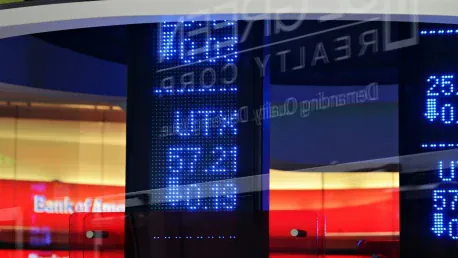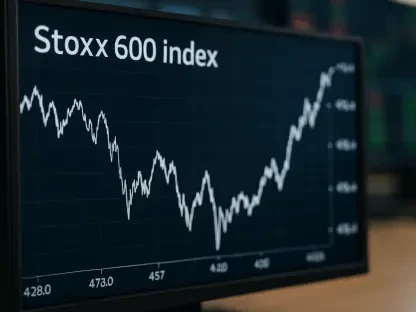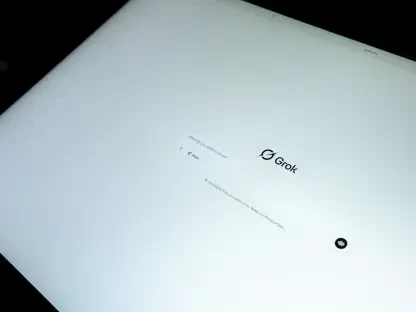As the 2024 U.S. presidential election approaches, businesses operating on a global scale are bracing for significant currency market fluctuations. The neck-and-neck race between Kamala Harris and Donald Trump has heightened economic uncertainty, compelling corporate finance executives and multinational corporations (MNCs) to proactively manage their financial exposures.
Rising Currency Volatility Signals Need for Action
Sharp Increase in Implied Volatility
One of the most telling indicators of market apprehension is the surge in one-month implied volatility for major currencies. Bloomberg data shows that the euro, Mexican peso, and broader dollar index have all reached their highest volatility levels in over a year. This spike underscores the elevated risk perception among investors and corporations alike. Such volatility suggests that businesses and investors are greatly concerned about the potential economic consequences of the election, given the contrasting economic policies of the two candidates.
The heightened volatility has led to increased FX hedging activities among corporations. Companies involved in international trade or holding foreign assets have started to look for ways to protect their earnings and investments. This dynamic is evident in the upward trajectory of hedging volumes reported across multiple sectors, indicating a collective move towards mitigating foreseeable risks. The spike in implied volatility serves as a glaring reminder that businesses must stay vigilant and proactive in their financial strategies to navigate the potential turbulence that comes with political uncertainty.
Historical Context Fuels Preemptive Measures
Reflecting on past elections, particularly the 2016 Trump victory, which saw the Mexican peso plummet only to rebound by 10% during his term, companies are not leaving anything to chance. Businesses vividly recall the sudden volatility and are therefore extending and intensifying their hedging strategies well ahead of the election. Lessons learned from previous political cycles have reinforced the importance of being prepared, prompting firms to take extensive steps in securing their financial positions.
The experience of 2016 serves as a crucial lesson. Significant and rapid currency movements during that election period left many companies scrambling to adjust their financial plans. Today, businesses aim to avoid the same pitfalls by preemptively implementing hedging mechanisms. This approach not only protects against unforeseen currency swings but also provides a buffer to maintain operational stability. Companies are taking no risks, extending hedging contracts and locking in rates ahead of time to ensure they are not caught off-guard by unexpected political outcomes.
Proactive Hedging Strategies Take Center Stage
Increased Hedging Ratios and Extended Contracts
To mitigate the anticipated turbulence, firms are opting to increase their hedge ratios and extend the duration of their hedge contracts. Traditional three-month hedges are being lengthened, especially by Mexican importers who face direct exposure to U.S. trade policy shifts. By extending the horizon of their hedging activities, these companies aim to maintain financial stability through the potential post-election period and into the new year.
For instance, Mexican firms importing goods from the United States might extend hedges that traditionally cover a single fiscal quarter to cover several quarters instead. This move ensures that their cost structures remain predictable despite any sudden currency fluctuations that may arise due to the election results. By hedging for longer periods, companies create a buffer that allows them to manage costs effectively, even if political outcomes trigger dramatic shifts in foreign exchange rates.
Use of Forward Contracts and Swaps as Safeguards
A range of financial instruments like forwards and swaps are being deployed by MNCs to secure predictable cost structures and financial stability. A survey conducted by U.S. Bancorp highlights that 60% of corporate finance executives are more inclined towards interest-rate and currency hedging amid the political uncertainty. These instruments enable companies to lock in current exchange rates for future transactions, thereby insulating them from potential adverse movements in currency prices.
By using forward contracts, businesses agree to purchase or sell a currency at a specific rate on a future date, thus eliminating the uncertainty that comes with fluctuating exchange rates. Swaps, on the other hand, allow companies to exchange interest or currency rates between two parties, providing a hedge against unfavorable shifts. This comprehensive approach to risk management is not just a defensive measure; it is a proactive strategy to ensure financial resilience, safeguarding future sales and procurement activities from unexpected economic disruptions.
Sector-Specific Sensitivities and Strategic Responses
Tech and Semiconductor Firms Brace for Impact
Firms in the tech and semiconductor sectors, heavily dependent on global supply chains, are particularly vigilant. With the potential for drastic policy changes on trade and tariffs, these companies are deploying meticulous hedging measures to buffer against adverse currency movements. The tech industry, known for its intricate and globalized supply chains, is especially sensitive to any fluctuations in currency values resulting from policy shifts or increased tariff regimes that might come with a new administration.
Given their global reach, tech companies often deal with multiple currencies and thus face heightened exposure to FX risks. For instance, a firm purchasing components from Asia while selling products in Europe must account for and hedge against the potential volatility in multiple currency pairs. By adopting forward contracts and swaps, these companies can stabilize costs and protect profit margins. The semiconductor sector, in particular, is preemptively managing its exposure, ensuring that disruptions in currency rates don’t cascade into operational uncertainties.
Defense and Trade-Exposed Companies’ Defensive Moves
Defense sector companies, along with those involved in extensive trade with China, are also prominently hedging their bets. The heightened exposure to geopolitical risks makes these sectors more susceptible, compelling them to reinforce their financial defenses more robustly. With potential policy shifts on the horizon, these companies are actively seeking financial instruments that provide security against unfavorable currency fluctuations.
Trade-exposed companies, particularly those relying heavily on cross-border transactions, cannot afford to overlook hedging strategies. Defense contractors, for example, might face substantial risks if currency values shift unfavorably, impacting international sales and procurement contracts. By employing forward contracts and other hedging instruments, these firms aim to lock in current exchange rates, ensuring that their financial projections remain intact despite political volatility. Such measures are crucial in maintaining the stability of long-term projects that span multiple fiscal years.
Case Studies Illustrating Practical Applications
Capstone Copper Corp.’s Comprehensive Hedge Strategy
Capstone Copper Corp. exemplifies a thorough approach by employing FX collars to guard against sharp currency swings. The company’s extensive operations, influenced by currency shifts, necessitate such advanced financial strategies to ensure operational continuity. FX collars are a sophisticated hedging tool that combines options to create a range of favorable exchange rates, allowing companies to set both a floor and a ceiling for currency values. This method provides protection against extensive volatility while still allowing for some cost benefits if the currency moves favorably within the set range.
For Capstone Copper Corp., whose operations are spread across multiple countries, the ability to manage currency exposure is critical. The company regularly deals with sales in various currencies while incurring costs in others. By locking in a range of acceptable exchange rates, Capstone can ensure that profit margins are protected from drastic currency shifts. This approach not only stabilizes their financial outlook but also provides a predictable framework for long-term planning and investment.
Asics Corp.’s Multifaceted Hedging Approach
Asics Corp. demonstrates a vigilant and multifaceted hedging framework. Keeping an eye on the U.S. election outcomes and related geopolitical risks, the company diversifies its hedges across several currencies, securing its financial interests amid uncertainty. Unlike a more singular approach, Asics incorporates a mix of forward contracts, options, and swaps tailored to various currencies they deal with, ensuring a well-rounded defense against potential economic turbulence.
This comprehensive strategy allows Asics to be prepared for various scenarios, whether they involve sudden devaluations or appreciations of currencies tied to their business operations. By diversifying their hedging instruments, the company mitigates risks associated with over-reliance on a single hedging tool. Such preparedness ensures that Asics can maintain its competitive edge and financial stability, regardless of the electoral outcome. Their approach reflects an understanding that multifaceted risks require equally multifaceted solutions to ensure robust financial health.
Industry-Wide Trends and Consensus
Broad Adoption of Defensive Measures
The overarching trend across industries points to a clear consensus: proactive risk management is crucial. Firms are aggressively managing their financial exposures, emphasizing the need for stability and predictability in these unpredictable times. The collective move towards comprehensive hedging strategies underscores an industry-wide recognition of the potential risks posed by political events and their impact on financial markets.
As companies brace for potential currency volatility, the adoption of hedging instruments has become increasingly widespread. Sectors ranging from tech to manufacturing acknowledge the necessity of building financial defenses capable of withstanding sudden shifts in market conditions. This mass adoption signifies a shift in corporate financial strategy, where risk management is not just a precautionary measure, but an integral component of overall business resilience and operational continuity.
Focus on Stability and Predictability
As the 2024 U.S. presidential election draws nearer, businesses with global operations are preparing for major fluctuations in currency markets. The closely contested race between Kamala Harris and Donald Trump has increased economic uncertainty, prompting corporate finance leaders and multinational corporations (MNCs) to take proactive steps in managing their financial risks. Companies are closely monitoring political developments and geopolitical trends that could have significant impacts on currency valuations. Financial strategists are implementing hedging techniques, diversifying their investment portfolios, and adapting to potential policy shifts that could arise from either administration.
Moreover, firms are not only focusing on immediate fluctuations but also considering long-term implications on international trade, taxation, and regulatory environments. With the election’s outcome poised to influence global market conditions, the strategic decisions made during this period might define corporate resilience in the months and years ahead. The heightened vigilance among corporate finance executives and MNCs underscores the intricate connection between political events and economic stability in an increasingly interconnected world.









